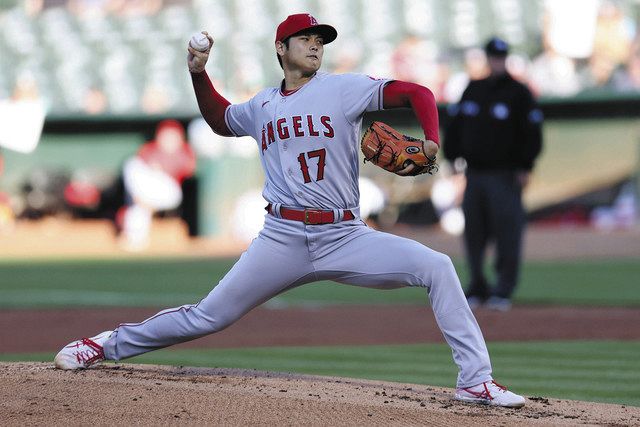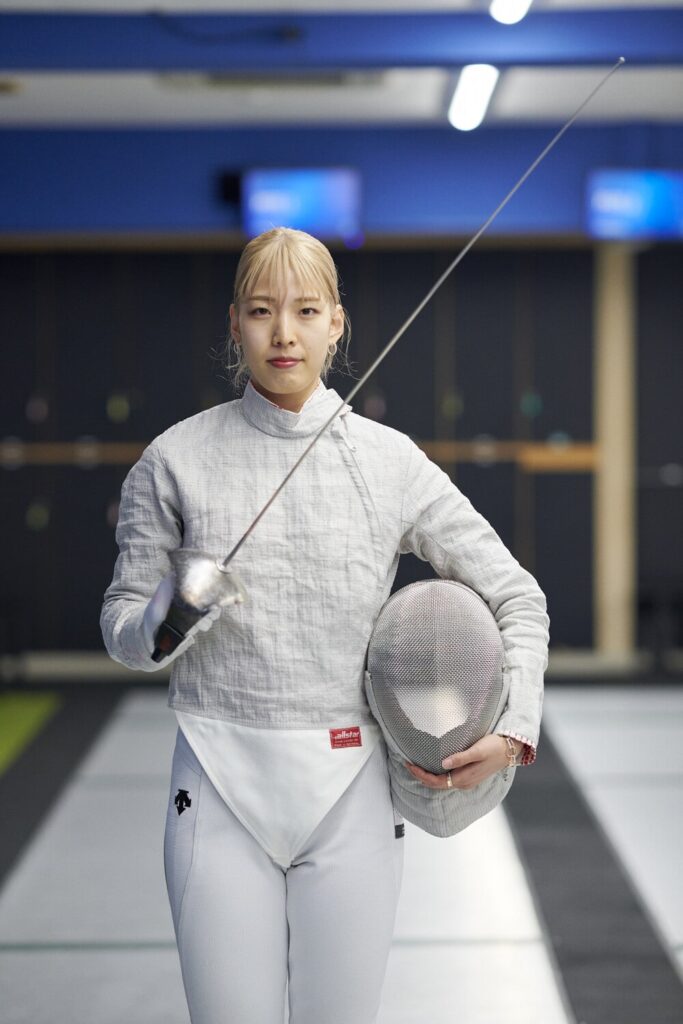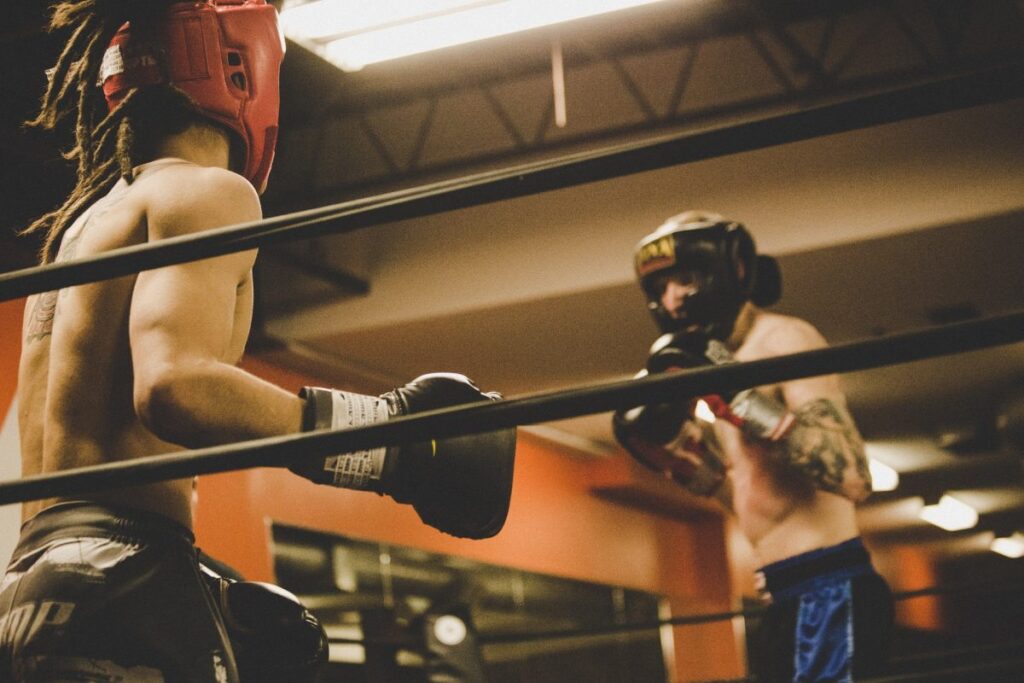
In Kendo, whether or not an ippon is recognized is a very important factor that determines the outcome of a match.
However, even if you perform a spectacular technique in a Kendo match, it will not necessarily be recognized as a single technique.
In order for a technique to be certified as one, there are several strict criteria, and if it does not meet these criteria, it will not receive any points.
In this article, we will explore the main reasons why ippon is not recognized in kendo, and provide a better understanding of it as well as specific measures and advice to obtain ippon.
This information will be useful to all swordsmen who want to hone their Kendo skills and improve their performance in matches.
目次
What is ippon in Kendo?
In Kendo, “Ippon” refers to a valid blow or thrust that is recognized during a match, and is counted as a score for the match.
In order to receive one, the following conditions must be met:
- Accurate striking point : The striking part is the effective part of the shinai (the striking part), and the striking part is the precise part of the men (head), torso (body), kote (wrist area), and tsuke (throat). You need to do some poking.
- Proper Posture and Spirit : Proper posture and strong spirit are required when striking.
- Drawing the tip of the sword : The position of the tip of the sword after the blow must be appropriate, that is, the tip of the sword must be pointing towards the opponent’s body after the blow.
- Coordination of breaking and striking : It is also important to be in a state where you can break down your opponent with your techniques at the moment of striking.
When all of these conditions are met, it is judged as a “valid hit” and a hit is allowed.
In kendo matches, referees make decisions strictly according to these conditions.
Ippon is considered to be one of the most important scoring methods in Kendo, as it is not just a technique that has been determined, but is evaluated as a state in which Kendo’s philosophy and technique are highly connected.

The main reason why one book is not approved
There are several main reasons why ippon is not recognized in Kendo.
Understanding these reasons is essential to improving your Kendo techniques.
-
Lack of Accuracy in Techniques : In order to qualify as an ippon, the striking part must hit the opponent’s men, torso, kote, or tsuke in the exact area. If you deviate from the target by even a little, the strike will not be considered effective.
-
Inappropriate way of applying force : Applying force requires not only the strength of the blow, but also the proper posture and pushing of the tip of the sword when striking. Unnatural blows that rely on force or weak blows that cause the opponent to lose their strength will not be recognized as a single hit.
-
Miscalculating the distance to your opponent : You need to strike from an appropriate distance. If the distance is too far, the blow may not reach you, or even if it does, it may not be powerful enough. On the other hand, if it is too close, the tip of the sword will be improperly handled and will not be considered an effective blow.
-
Inadequate tip extraction : If the tip of the sword is not facing the proper direction after the strike, the technique will not be considered effective. If the tip of the sword is not pulled out enough, the blow is considered incomplete.
-
Lack of breakage : If you don’t break down your opponent enough with your technique, it won’t be recognized as an ippon, even if it looks like you’ve nailed it. In kendo, one of the important elements in achieving an effective strike is to disrupt the opponent’s balance.
By improving these factors, you can increase the effectiveness of your techniques and increase your chances of getting an ippon in a Kendo match.

Countermeasures and training methods
An effective practice method and proper mindset are essential to take the ippon.
Aim to improve your performance in matches by incorporating the following measures and training methods.
-
Thorough practice of basic techniques : Repeated practice of the basic techniques of kendo (basic strikes) is very important in acquiring accuracy of strikes and proper control of force. During daily practice, we confirm that the form is faithful to the basics, and practice repeatedly so that we can perform the correct strikes naturally.
-
Master range control : Attacking from the correct range can make a huge difference in the effectiveness of your strikes. In order to get a sense of the distance between you and your opponent, it is important to actively practice kumite with a variety of practice opponents and hone your sense of practice in real match situations.
-
Improving strength and speed : Speed and strength are important factors in a Kendo match. By doing regular running and physical training, you can increase your endurance and speed during matches.
-
Developing mental attitude and concentration : Mental attitude when approaching a match is also important. Having a routine to relax before a match and mental training to stay focused during a match are effective.
-
Understand the referee’s point of view : Understanding how the techniques you perform will be evaluated by the referee is also important when taking ippon. By attending a referee training course, you can deepen your understanding of how referees view techniques and aim for more effective techniques.
By combining these training methods, you can not only improve your technique, but also increase your effective strikes in matches.
Constantly reviewing your techniques and aiming for improvement is the path to growth in Kendo.

Actual match examples and analysis
In Kendo matches, there are often situations in which not a single technique is recognized.
Here, we will give an example of a specific match and analyze the reason why Ippon was disallowed.
Match example
During the match, player A attempts a quick men strike against player B.
Player A used quick footwork to close the gap and hit the face forcefully, but it was not recognized as an ippon.
analysis
-
Accuracy of the strike : Player A’s strike did not hit the correct part of the plane, but a slightly off-center position. In Kendo, the accuracy of the striking point is extremely important, and even the slightest deviation may not be considered an effective strike.
-
Sword tip unsheathed : Player A’s sword tip was not pointing properly in front of the opponent after the blow. For this reason, the referee judged that the batting lacked completeness.
-
Lack of Spirit : Banen A put a lot of effort into his technique, but the referee felt that he didn’t have enough spirit at the moment of hitting. In Kendo, not only the strength of the techniques is important, but also the mental concentration and spirit when performing.
-
Lack of Breakdown : Player A did not break down his opponent enough to drive into the ball, making it easier for his opponent to stay in position. A lack of tsutsu is the main reason why the technique is less effective and cannot be recognized as an effective utatsu.
Improvement measures
Player A should spend more time practicing target hitting in order to improve his batting accuracy.
It is also desirable to pay attention to the position of the tip of the sword after striking and the completeness of the technique, and to improve these elements through repeated practice in actual combat.
Furthermore, it is important to cultivate the spirit from within when performing techniques, and simultaneously hone the technique to break down the opponent.
By incorporating such specific analysis and improvement measures, athletes will be able to acquire more effective techniques and increase their number of hits in matches.

Questions and Answers: FAQs about Kendo Ippon
We will summarize and explain the frequently asked questions and answers regarding the situations in which ippon is not allowed in a kendo match.
This will help you deepen your understanding of Kendo rules and improve your performance in matches.
Q1: Why was the blow not recognized as one even though it hit the opponent?
A: Even if the blow hits the opponent, several conditions must be met in order for it to be recognized as a hit. Multiple factors are evaluated, including whether the blow hits the correct area, whether the tip of the sword is properly drawn, whether the blow is accompanied by spirit, and whether the opponent is broken by the technique. If any of these items are missing, it will not be accepted as a book.
Q2: Is it possible that you hit the ball in the face but the referee didn’t notice?
A: It’s rare that the referee doesn’t notice, but there are three referees in a Kendo match, so even if one person misses it, the other referees will make a judgment. However, if the blow is very fast or if the field of vision is obstructed, the technique may be missed. Referees are also human, so it may be difficult to expect them to be 100% accurate.
Q3: How does it affect if the force of the blow is weak?
A: If the force of the blow is weak, it will be judged that the power required for the technique is insufficient, and it will not be recognized as an ippon. In Kendo, strikes require appropriate force and speed to effectively break down the opponent. If the force is weak, the blow will have little effect on the opponent and will not be considered an effective strike.
Q4: How should I practice to win an ippon in a match?
A: In order to take the ippon, it is essential to practice the basic techniques repeatedly. It is also important to practice in a form similar to actual combat (kumite) to get used to real match situations and improve your sense of distance and timing. It is also recommended to practice Kendo Kata to improve the beauty and precision of your techniques.
Through these FAQs, you can gain a deeper understanding of Kendo and aim to improve your knowledge and techniques to succeed in your matches.

summary
Understanding how to take ippon in kendo and its certification standards is very important in order to improve your kendo techniques.
In this article, we will explain the conditions for ippon to be recognized, the main reasons why ippon is not recognized, effective training methods, analysis of specific match examples, and answers to frequently asked questions about ippon. We have provided a detailed guide to get your points.
Thoroughly practicing basic techniques, controlling distance and force appropriately, developing mental preparedness and concentration, and understanding the referee’s point of view are especially important elements for winning ippon.
Paying attention to these factors during Kendo practice and competitions and practicing on a daily basis will lead to improved Kendo techniques and success in competitions.
Kendo is not only a competitive sport, but also a martial art that enhances spirituality and emphasizes etiquette and respect.
Therefore, we are required not only to improve our techniques, but also to embody this spirit in our behavior and interpersonal relationships in the dojo.





